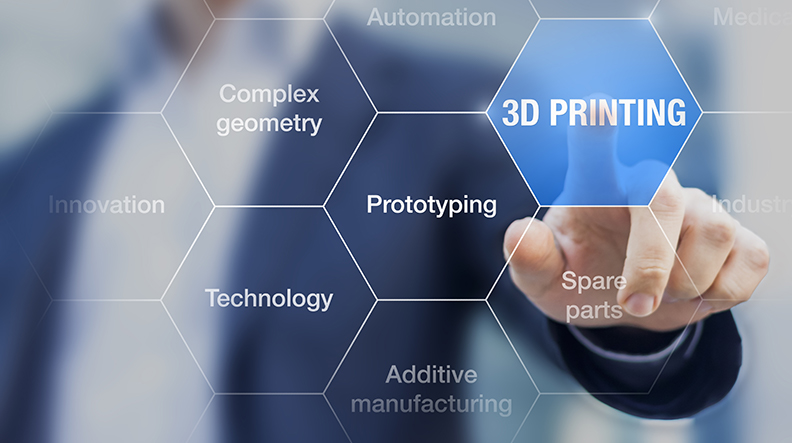
The orthopaedic industry has become more invested in additive manufacturing, as demonstrated by product launches, partnerships and FDA’s recent guidance document on the technology. But, what do surgeons think about it?
Nirav Shah, M.D., a sports medicine surgeon at Parkview Orthopaedic Group in Palos Heights, Illinois, sought to share his observations during a presentation at OMTEC 2016. Shah serves as a consultant to Northwestern University’s TEAM lab, which is developing additively-manufactured tissue inks and biological tissue. He also uses additive manufacturing software for operative planning.
Shah believes that additive manufacturing leads to less waste, and serves a critical role in treating complex cases or deformities with patient-specific implants. He also thinks that there is room in orthopaedics for printing tissue or developing the actual materials to regenerate tissue.
Dr. Shah’s presentation is summarized below, offering what he believes to be five questions that surgeons have on the use of additively-manufactured devices.
- Can You Prove That Additive Manufacturing is Better than Traditional Methods?Where is innovation going to make a difference in patient outcomes? Even in the orthobiologic or synthetic worlds, everyone is using a lot of things right now without much evidence, or without even really knowing the pathways that explain why these things work. We’re entering that frontier with additive manufacturing. Are we actually going to be making better materials because of it, to change patient outcomes, and not necessarily just create another implant? I think there will always be a case for additive manufacturing or 3D printing when it comes to customization for difficult cases, where we’re not dealing with normal-based anatomy initially.
Surgeons deal with hospital and payor issues all of the time. When it comes to newer technologies, like computer-aided navigation or platelet rich plasma (PRP), adoption is going to be based on evidence. Can you prove that this is going to be better?
- Will Additive Manufacturing Lead to Surgical Efficiency?While the transition to value-based medicine is there and will continue (meaning that surgeons get paid for the value and quality of their work), it’s still value and volume. If I get a great clinical outcome for one case as opposed to great clinical outcomes from ten cases, I’m still going to get paid more, as is the hospital and the entire system, by doing more cases.
- How Will This Impact Implant Cost?Will additive manufacturing or 3D printing decrease the cost of implants? Can a company say to a hospital, a payor system, a physician or a physician group, “I can add value”?
- Will This Help Me Market My Services?Every surgeon and hospital is looking for [additive manufacturing] because patients are asking for it. Patients ask me all of the time, “Can you do this?” To which I reply, “Why do you ask?”, and they don’t know if it’s better for them, but they do know that they’re getting marketed to the hilt about it. So that’s what surgeons want to know, will this help me market my services? Hospital systems are installing 3D printers, trialing to see if it helps increase their patient flow-through. It has nothing to do with patient outcomes, oftentimes. It’s based on: Will it attract more patients to that hospital system?
- Does the Future Hold the Ability to Print More than Just Devices?We’re looking at incorporation of biologics. Is there a way for additive manufacturing or 3D printing to enhance biological incorporation, synthetic incorporation, increasing tissue-to-bone healing, bone-to-bone healing or even implant-to-bone healing—whether through us of biologics or synthetic biomaterials, that remains to be seen.
Dr. Shah spoke to 40 orthopaedic professionals at OMTEC. View and download his presentation here.




